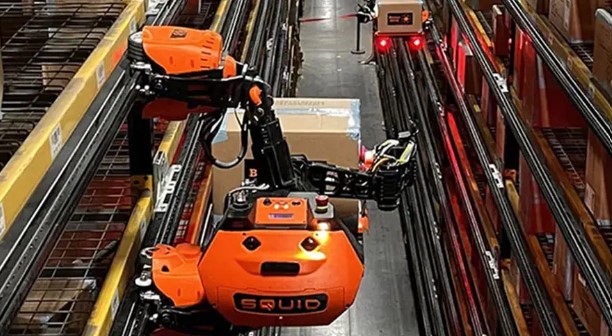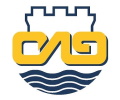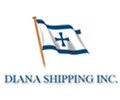Maersk North America Market Update – March 2023

Ocean Update
Our North American gateway terminals are mainly stable at this time and we have sufficient availability of dry and reefer equipment to cover customer requirements. Our teams continue to monitor terminals and ports and work to mitigate any potential disruptions. Customers are advised that, due a general decrease in cargo volumes, many terminals have begun to reduce second shift, Friday, and weekend gate hours that were once extended to accommodate pandemic era volumes.
As global trade dynamics continue to change, Maersk teams continue to analyze schedules and make changes in the interest of enhancing supply chain predictability for customers. As an example of the shifting market dynamics, the combined container imports of Los Angeles and Long Beach, the main gateways for U.S. trade with Asia, dropped 38% in February from a year earlier, to their lowest level since March 2020.
In response to changing demand, we recently announced that we had blank sailings on the TP2 serving Long Beach from eastern China as well as on the TPX service to Los Angeles.

Given lower utilization, we foresee a further need to adjust capacity to demand for service into the Pacific Southwest at the end of March and into beginning of April. However, cargo can be covered on other Maersk services operating during the same week to ensure minimal service delivery impact.
We have also announced adjustments to the 2M Transatlantic Network that will be in effect as of the first week of April. The new port rotations and proforma schedules will improve schedule reliability and predictability for our customers, while also reducing carbon emissions to support sustainability goals. We will continue to assess the changing situation within the ocean network and make the necessary adjustments for the benefit of our customers’ supply chains.

East Coast Highlights
Montreal and Halifax are experiencing one-day vessel waiting times due to vessel bunching and bad weather delaying Transatlantic crossings. These terminals can typically only work one vessel at a time, so any impacts quickly affect follow-on vessel berthing and work up.

West Coast Highlights
The Pacific Northwest has had winter weather challenges but congestion has been improving overall for the past several weeks. Prince Rupert is now only experiencing 1-day vessel wait times with rail dwell below 4-days. Its yard capacity is at 70%. In Vancouver, vessel wait times have dropped to just three days, down from 10 days in early March. Rail continues to be a challenge with average departed rail dwell sitting at 7-days, however, Centerm is expected to implement service rotation improvements that will reduce rail discharge rates beyond its handling capacity. Yard utilization is currently 95%.
Landside Updates – Warehousing & Distribution
Top TPM Talks – inventory, markets, and automation
While a record crowd gathered for the annual TPM conference in Long Beach last month to talk about Transpacific ocean freight, many attendees approached the Maersk team to talk about the next leg of the journey – warehousing and distribution. Having a WND conversation at TPM may seem out of place for some, but not for those looking at the bigger picture of end-to-end integrated logistics. Three themes stood out in conversations with customers looking to improve their WND networks in 2023 and beyond, each covered below.
What to do with all this inventory? While somewhat easing, warehouse bloat is still a major concern for many businesses that need to take action to make way for the new, whether by discounting, selling off to resellers, or other seemingly drastic measures. One “head shaker” story going around was the news of a toymaker announcing plans to eliminate excess inventory at a cost of $30-$36 million in order to align inventory levels with the operating capacity of its distribution center.
Inventory carrying costs must be closely watched, particularly when it can take months for bloated inventories to resolve. Businesses in jeopardy of missing planned inventory turnover rates need to open lines of communication with their supply chain partners to explore what mitigations are possible. Whether it’s as simple as the need for greater visibility of aging reports, or the need to slow down the supply chain to ensure there will be space for new inventory, communicating with supply chain partners well in advance is critical. Service providers can be most helpful if they have a clear picture of what’s inbound, where warehouse capacity stands, and how customer demand is keeping up.
What to do in the face of this market? Conference goers fruitlessly looked for the “crystal ball booth” as they tried to make sense of the swirling economic indicators that have everyone wondering what’s to come for the global economy, the U.S. market, and the next step in the Federal Reserve’s efforts to contain inflation through interest rate actions. All of this uncertainty was before yet another “Black Swan” event appeared this month with the failure of Silicon Valley Bank and the financial turmoil that has ensued.
The conversation then as it is now revolves around the need for resilient supply chains in the face of all-too-common Black Swan events. By definition, resilience is the ability to return to equilibrium after operations deviate from expectations. This can be achieved by increasing the number of response options within your supply chain and/or decreasing the time needed to execute those options when you have the leverage to do so. Resilience is improved by making the time to establish a business continuity plan with partners. With global supply chains stretched out six months or longer from the purchase order to the warehouse, chances of something unexpected happening are high, especially when markets are reacting to 24/7 inputs. Our best answer to this question was – “let’s plan together.”
What to do around automation? Though “Research and Markets” reports that more than 80% of warehouses are not automated, Gartner reports that 99% percent of supply chain organizations have plans to invest in emerging technologies. This made automation a particularly hot topic for the future focused. Some interest in automation stemmed from the perennial labor concerns of cost, availability, and reliability. Many, however, were simply asking how automation might help their businesses innovate and become as efficient as possible. Most were wondering where to even begin.

Warehouse automation conversations can be sprawling at best given the growing availability of options – from autonomous mobile robots, to drones, to the evolution of automated storage and retrieval systems and modern conveyors. Developing a customized solution that works is highly dependent on the inbound and outbound order profiles handled by a particular facility. No one size fits all. And not every business needs automation. The best advice we could give in these conversations was, “let’s talk some more” as Maersk now has more than 450 warehouse locations around the world – spanning North America, Asia, and Europe – where implementation of emerging technologies and automation is an ongoing affair.
For customers struggling with the challenge managing storage costs, one solution is to allow Maersk to manage it for you. Through the Maersk Provided Trucker Program, we take responsibility for securing capacity and recovering containers within free time at the port and rail ramps provided we are informed that the container is cleared for pickup. Maersk Provided Trucker services are added to your Ocean Bill of Lading, minimizing invoicing across your supply chain.
The Maersk Provided Trucker Program offers bundled, all-in rates for operational efficiencies across both Import and Exports and include.
o Truck line haul for roundtrip drayage
o Fuel
o Standard chassis
o 2 hours for loading/unloading
o Drop/pick services for consistent cargo flows
o One invoice for ocean and drayage services
o Storage, should driver not pick up cargo before last free day
o Charges, if driver must pick up a chassis in another location; and
o Driver congestion fees at terminals/ramps
o Opportunity to stop the container detention clock once the container is empty on your yard.
The Maersk Provided Trucker Program is available in all markets. EV solutions are available in Los Angeles, Chicago, and Newark for customers looking for decarbonization alternatives.
Topics, Trends & Insights
Canada poised to pass new law to fight forced labor in supply chains
The Canadian Bill S-211, “Fighting Against Forced Labour and Child Labour in Supply Chains Act,” continues to advance in the Canadian Parliament. Sponsored by Canadian Senator Julie Miville-Dechêne, the bill has already been approved by the Senate and it now sits with a House of Commons standing committee. It is just two votes from becoming law and is expected to clear its final hurdles soon. The Act also has the support of Canadian Labour Minister Seamus O’Regan.

If passed, the Act would impose an obligation on government institutions and private-sector entities with as few as 250 employees to report on measures taken to prevent and reduce the risk that forced labor or child labor is used in their supply chains. The bill intends to increase transparency by imposing reporting obligations. The bill also requires reports to be public and proposes fines for private entities that make false or misleading statements.
This legislative step would layer atop other new rules and regulations affecting North American importers since the US-Mexico-Canada Agreement went into effect in July 2020. That agreement requires signatories to prohibit the importation of goods produced by forced labor, including forced child labor. The U.S. enacted the Uyghur Forced Labor Prevention Act (UFLPA) in 2022, prohibiting the import of goods into the U.S. made with the forced labor of Uyghurs and other minority groups in China’s Xinjiang Uyghur Autonomous Region. The U.S. has denied 229 shipments year to date at a value of $489M according to data posted on its tracking website.
Complying with increased reporting regulations and the due diligence required can be daunting. Importers often lack access to information and documentation through the various tiers of complex supply chains. Having the capability to analyze risk implications and address the impact of illegal transshipment is key to protecting the business. For more information on how to protect your supply chain visit our expert opinion page on forced labor.
Source: Maersk

 Hellenic Shipping News Worldwide Hellenic Shipping News Worldwide, Online Daily Newspaper on Hellenic and International Shipping
Hellenic Shipping News Worldwide Hellenic Shipping News Worldwide, Online Daily Newspaper on Hellenic and International Shipping






















 PG-Software
PG-Software